by Naomi L. | November 27, 2013 | Blog, Creative Writing, Off The Bookshelf |
Since last week’s post was dedicated to the amazing children’s author Dr. Seuss, I wanted to follow it up with a post about one of his many wonderful books. However, the more I thought about it, the more I realized how hard it would be to choose which book to feature; there are so many good stories by Seuss that it’s almost impossible to choose just one favorite. Eventually, though, I settled on one of the books I find most inspiring: Horton Hears a Who!
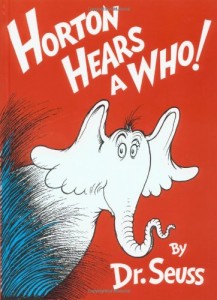
Horton Hears a Who!, by Dr. Seuss
Summary
First published in 1954 by Random House, Horton Hears a Who! tells the story of Horton the Elephant, a resident of the Jungle of Nool, and his quest to help the Whos. After hearing a small yelp coming seemingly out of thin air, Horton discovers the microscopic civilization of Whoville living on a speck of dust. Deciding that every life has value regardless of size, he places the speck on a clover and sets out to find a safe location to keep the Whos out of harm’s way. Unfortunately, being the only one with ears keen enough to hear these tiny people, the elephant has trouble convincing the other jungle residents that Whoville exists, and when they decide to put an end to his crazy antics by destroying the clover, Horton must struggle to save his new friends and teach the people of the Jungle of Nool an important lesson: “a person’s a person, no matter how small”.
Review
Horton the Elephant is one of my favorite Dr. Seuss characters, mostly for his kindness and integrity. He stays true to his word no matter what; as seen in the previous story featuring his character – Horton Hatches the Egg – when Horton makes a promise, he has every intention of seeing it through, and that makes him one of the best role models in Seuss’s stories.
I meant what I said
And I said what I meant.
An elephant’s faithful,
One hundred per cent!
– Horton the Elephant, Horton Hatches the Egg (Dr. Seuss, 1954)
Like many of Dr. Seuss’s books, Horton Hears a Who! is more than just a children’s story. It also teaches good lessons, such as the importance of open-mindedness and understanding the issues of isolationism. Horton’s biggest challenge is convincing his peers that something they can’t perceive or fathom actually exists – which, when you think about it, is a story that’s only too familiar in real life. But what’s really interesting about this book is the history behind its lessons. Once strongly opposed to Japan, the author changed his opinions after World War II, and used this book as an analogy for the American post-war occupation, even dedicating the book to a Japanese friend. Overall, the metaphor of two worlds overlapping creates a beautiful message, one that children can certainly understand and appreciate.
Horton Hears a Who! is one of Seuss’s most notable works. From the children’s book to the TV special to the 2008 full-length feature film (which I thoroughly enjoyed; I swear the “We are here!” scene gives me chills every time I watch it), this story is wonderfully imaginative and fun for readers and viewers of all ages. Though they may have been written for a young audience, no one is too old to enjoy the stories of the great Dr. Seuss!
Inspiration
What I always found inspiring about this book was the main character’s determination to help an entire community that he couldn’t even see. I admired Horton’s devotion to his cause, and the respect he had for all forms of life made him a truly lovable hero. With colorful characters, adventure and a heartwarming message, Horton Hears a Who! is one of my favorite Dr. Seuss stories, and one I’ll definitely enjoy for the rest of my life.
by Naomi L. | November 20, 2013 | Blog, Creative Writing, Notable Authors |
I’ve been feeling a little nostalgic lately: looking through my books for old favorites, watching movies from my childhood whenever they’re on TV, even listening to songs from the ’90s once in a while. That’s how I recently had an idea for another post on inspiration, because when I think about my childhood, one of the most prominent figures that comes to mind is the author of some of my favorite classics of children’s literature: Dr. Seuss.

Theodor Geisel in 1957
Bio
Name: Theodor Seuss Geisel
Pen Name: Dr. Seuss
Life: Mar. 2, 1904 – Sept. 24, 1991
Gender: male
Nationality: American
Occupation: writer, cartoonist, animator, publisher, artist
Genres: children’s literature
Notable Works: The Cat in the Hat, Horton Hears a Who!, Green Eggs and Ham
My Favorite Works: The Cat in the Hat, The Sneetches and Other Stories, Horton Hears a Who!, How the Grinch Stole Christmas!
Inspiration
Dr. Seuss was a huge part of my childhood. When I was little, my mother signed us up for the Dr. Seuss book club, so we would get one of his books in the mail every month. By the time I started reading on my own, I had a large collection of fun stories to choose from, such as The Cat in the Hat, Horton Hears a Who! and Green Eggs and Ham. Because of this, my earliest memories of reading were filled with colorful characters and silly rhymes that kept me entertained for hours on end. If I ever wanted to get lost in books, I could always count on Seuss’s imaginative world.
The main reason I find this author so inspiring is because his stories were an important first step into my love of books. Sometimes I wonder if I would have grown to love reading as much as I do today if I hadn’t had the privilege of enjoying Dr. Seuss’s work at such a young age. His books were very easy to read and understand, and that always made reading such a pleasure. In fact, his rhymes and style of writing were so memorable that to this day, my mom and I can quote lines word for word back to each other. In this way, Seuss gave us the gift of memories that we could share for the rest of our lives.
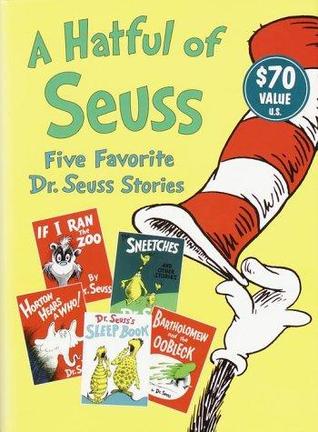
A Hatful of Seuss: Five Favorite Dr. Seuss Stories
But there was much more to these books than simple rhymes and oddly shaped characters with bizarre names. Dr. Seuss had a talent for embedding important lessons in his stories without making them blatantly obvious or patronizing. Moral issues are cleverly hidden behind tales of strange creatures living in unusual worlds: The Sneetches shows us that racism is unjustified; The Lorax shines light on environmentalism and the dangers of corporate greed to the natural world; How the Grinch Stole Christmas! criticizes the commercialization that the holiday season has suffered over time; and even a story as simple as Green Eggs and Ham can be read as a lesson on trying new things in order to form educated opinions. There was almost always something to learn in Seuss’s books, and because the lessons were presented in such a kid-friendly format (complete with his colorful illustrations), it made his stories that much more accessible to children just starting to discover the world around them.
There are quite a few authors I associate with my childhood, but Dr. Seuss is by far one of my favorites. His books inspired me to continue reading beyond the beginner level, and the lessons in his stories have stayed with me into my adult years. Even now, I can’t help but smile as I think about how I once knew The Sneetches by heart and how I still enjoy reading Horton Hears a Who! out loud once in a while. Though authors like Roald Dahl and J.K. Rowling were great inspirations for my writing, Dr. Seuss was a great inspiration for my reading, and in my opinion, there’s no greater gift that a writer can give to children. To the little girl still in my heart, Dr. Seuss will always be a hero.
by Naomi L. | October 9, 2013 | Blog, Creative Writing, Featured |
The new Romeo & Juliet movie is coming to UK and US theaters this Friday (which I admit makes me totally jealous, since there’s no set release date for where I live yet). In the spirit of celebrating one of William Shakespeare’s most famous plays, today’s topic is centered around this classic tale of love, fate and tragedy.

Douglas Booth and Hailee Steinfeld as Romeo and Juliet
Now I’m going to make a confession: I absolutely love this story. I love any story about forbidden love (as long as it’s well-told), and being the epitome of such a tale, Romeo & Juliet may be one of my favorites. In fact, I love it so much that I’ve read scenes several times over (yes, I read Shakespeare for fun, believe it or not), have actively sought out a fair share of adaptations, and have even used it as inspiration for my own romantic fiction.
But don’t mistake me for a silly fangirl. For the longest time, I believed the common interpretation that Romeo and Juliet were no more than two immature teenagers who recklessly rushed into a superficial relationship at the ultimate expense of their families and the rest of Verona. It wasn’t until I started researching in-depth analyses of the story (again, for inspiration) that I came to understand what I was missing in Shakespeare’s timeless classic, and what most modern readers/viewers might be missing too.
So to set your impressions straight before you head out to see this movie, here is a list of five points in Romeo & Juliet that you probably never noticed before. Get ready to see another side of this story!
(Warning: the following list contains possible spoilers for Romeo & Juliet. If you’re one of the few people on the Internet who are not familiar with this tragic story, proceed with caution. Or you can just read a full summary of the plot here.)
1) Rosaline is an important character
Before Romeo meets Juliet and falls desperately in love with her, he actually has his sights set on a different girl: Rosaline. In fact, his very first appearance in the play has him moping to his cousin Benvolio about the unrequited love he claims to feel for this unseen lady, and he even agrees to crash the Capulet ball with his friends just for the chance to see her.
But other versions of the story tend not to place very much importance on Rosaline. Most adaptations don’t even give her a face, and some exclude her character altogether, instead providing a different explanation for the Romeo character’s depression before he meets his Juliet (e.g. West Side Story: Tony longs for excitement in his life, which he finally discovers upon meeting Maria). This common alternative likely stems from the assumption that Rosaline’s only purpose in the original story is to lure Romeo to the ball so he can cross paths with Juliet, a plot point that can be easily worked around (continuing from the previous example, Tony first encounters Maria at a local dance that he only agreed to attend as a favor to his best friend).
Yet Rosaline actually plays a much greater role than a mere plot device. While pining for her, Romeo has a preconceived notion of what it means to be in love, and acts according to the lessons he’s learned from the hackneyed romantic poetry he likes to recite when thinking of her. At the first sight of Juliet, however, he abandons every thought of his former clichéd infatuation in favor of a much deeper passion that sparks some incredibly beautiful and original love poetry from his own heart (which, when you think about it, may have been Shakespeare’s way of saying “Take that!” to the poets before his time). To put it simply, the switch from Rosaline to Juliet is essential to highlight the main characters’ true feelings for each other by showing the audience the difference between Romeo thinking he’s in love and Romeo actually being in love.

Seriously, did Rosaline ever stand a chance against Juliet?
What you’re probably thinking: He takes one look at Juliet and forgets about Rosaline just like that? Damn, Romeo is so superficial!
What you should be thinking: Wow, Juliet inspires such beautiful passion in Romeo! He must really love her!
2) Mercutio’s Queen Mab speech is a warning
One of the many famous monologues in Shakespeare’s works is the Queen Mab speech delivered by the bold Mercutio in Act 1, Scene 4 of Romeo & Juliet. This is the scene in which he teases Romeo for pining after Rosaline and tries to break his illusions of love by delivering a lecture about the dreams of men and how they can ultimately lead to ruin. Sound familiar?
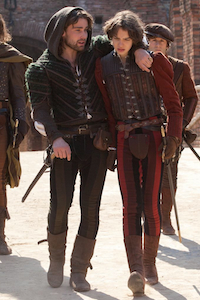
“True, I talk of dreams,
Which are the children of an idle brain” (1.4.97-98)
Mercutio starts by talking about Queen Mab, the mythical fairy queen who rides through the night bringing pleasant dreams tailored to every sleeping individual. But as he goes on, the lighthearted speech quickly takes a morbid turn into a downward spiral through darker visions of depravity (from lovers dreaming of romance to soldiers dreaming of killing), until finally culminating in a bitter yet accurate portrayal of society. Instead of taking from the speech a lesson about realism and the twisted nature of humanity, however, the idealistic Romeo simply disregards his friend’s words as another of his many mischievous taunts, silencing him with a single exasperated comment, “Thou talk’st of nothing.”
Like Romeo, modern audiences might be inclined to dismiss the Queen Mab speech as unnecessary rambling that contributes little to the rest of the story. Indeed, the monologue’s main purpose is to illustrate Mercutio’s wit and roguish nature, but it can also be interpreted as a critique against the romantic ideals that drive the play’s entire plot. In a way, Mercutio’s speech is foreshadowing the tragedies that will occur over the course of the story, and while it isn’t necessarily important, it certainly adds an interesting subtext to the themes of Romeo & Juliet.
What you’re probably thinking: Man, Mercutio really likes to hear himself talk!
What you should be thinking: Mercutio knew a thing or two about realism. Romeo probably should have listened…
3) Paris and Lady Montague even the score
Remember that part near the end of the story when Romeo kills the Count Paris in the Capulet tomb, and that other part when Montague says his wife died of grief after their son was banished from Verona? No? Then you must be familiar with any version of Romeo & Juliet other than the original play itself.
The fact is, most adaptations of this play tend to exclude the deaths of Paris and Lady Montague because they don’t contribute very much to the plot. The latter even goes virtually unnoticed, her offstage death being summed up in only two lines. So why would the playwright even bother killing these characters off in the first place?
Because it’s only fair. Before Romeo and Juliet famously take their own lives at the end, two other important characters suffer dramatic deaths in the middle of the story: Mercutio and Tybalt. But wait, wasn’t Mercutio on the Montagues’ side? Yes, but he was not a member of their family, as Tybalt was of the Capulets’. Mercutio was actually from the third noble family in the play: the Prince’s. This means that after all four of these characters die, the House of Capulet would technically have suffered the greatest loss.
Unless one more family member were to be lost from each of the other two houses. Enter Count Paris and Lady Montague. Paris, though aligned with the Capulets, is another kinsman to the Prince, and ends up being killed in a fight with Romeo during his visit to Juliet’s tomb while she’s faking her death. A little later, after the bodies are discovered in the tomb, the Prince calls forth the heads of the feuding households, at which point Montague accounts for his wife’s absence by explaining that the news of her son’s banishment ended up killing her.
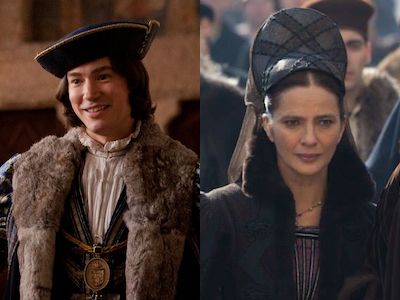
Surprise: one of them might not survive the movie this time. Guess who.
Final death toll:
- Capulets – 2 (Juliet and Tybalt)
- Montagues – 2 (Romeo and Lady Montague)
- Prince – 2 (Mercutio and Paris)
Conclusion: everyone loses, but at least in perfect balance.
What you’re probably thinking: Six people die by the end of the story? Shakespeare was twisted! No wonder most newer versions cut out these deaths!
What you should be thinking: Wow, every house loses two loved ones? How sad!
4) The poison and the dagger are symbolic
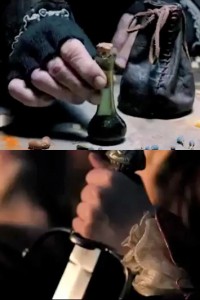
Romeo: “Thy drugs are quick. Thus with a kiss I die.” (5.3.120)
Juliet: “O happy dagger,/ This is thy sheath. There rust and let me die.” (5.3.169-170)
If there’s one thing for which Shakespeare was notorious, it was his innuendos. Plenty of his works contain their fair share of double entendres and the like, and Romeo & Juliet is no exception. However, instead of covering every example in the play (which would take a while, especially for scenes involving Mercutio), let’s just skip ahead to the one hidden in the famous double suicide ending.
You know how Romeo kills himself by drinking poison when he thinks Juliet is dead, and then Juliet stabs herself with Romeo’s dagger after she finds his body? Well, guess what: those two items are not random, but were carefully chosen to secretly represent the lovers’ intimate relationship. Romeo’s weapon of choice comes in a cup, which is a symbol of femininity. In contrast, Juliet uses a blade, a symbol of masculinity, to take her own life. In this way, their deaths are meant to reflect the intimacy they shared in life, thus completing the play’s theme of love ending in tragedy.
Or it’s all just another product of Shakespeare’s deviant mind, depending on how you choose to read into it.
What you’re probably thinking: Shakespeare must have been a misogynist, to have Juliet suffer a much more painful death than Romeo.
What you should be thinking: Even their deaths symbolize their intimate love. Shakespeare was clever with metaphors.
5) Romeo & Juliet is a coming-of-age story
Now I know what you might be thinking: how can Romeo & Juliet be a coming-of-age story if the entire plot only happens over four days? Perhaps it’s not a coming-of-age story in the traditional sense, as the teenage protagonists never actually reach adulthood, but their characters do mature throughout the course of the play, from the moment they meet to their untimely end.
At the beginning of the story, Romeo and Juliet are little more than naïve adolescents, both fairly inexperienced in life and in love. As soon as they first cross paths, however, they quickly propel each other toward the maturity of adulthood. Upon meeting Juliet, Romeo sheds his superficial conceptions of romance to become one of the most truly passionate lovers in all of English literature, and it is this passion that drives his actions for the rest of the play. Juliet, in turn, draws strength from her love for Romeo to develop into a confident and levelheaded young woman, making shrewd observations (“You kiss by th’ book”) and logical decisions that balance out her lover’s spontaneity. The intense love that outweighs the hatred around them makes their marriage all the more pure, and their loyalty to one another drives them to choose an eternity together in death over a miserable life alone. In short, though modern interpretations mistake these young lovers for foolishly infatuated teenagers, in-depth analyses reveal the true qualities of their complex characters, bringing to light the real depth of Shakespeare’s classic story of “death-marked love”.
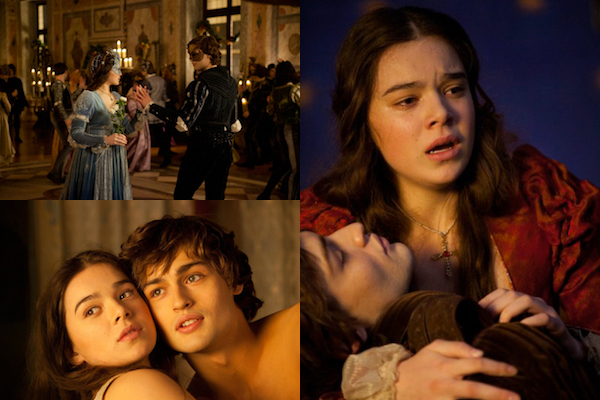
“For never was a story of more woe
Than this of Juliet and her Romeo.” (5.3.309-310)
What you’re probably thinking: They rushed into marriage after less than a day and then killed themselves because they couldn’t live without each other? Romeo and Juliet were so immature!
What you should be thinking: They were so young and they experienced such a grand romance. Romeo and Juliet were truly in love!
All caught up on these secret details?
Great! To leave you on a high note, here is the official trailer for the 2013 release of Romeo & Juliet (the original UK trailer can be found here). Enjoy!
[youtube=http://www.youtube.com/watch?v=Gp9yaZcrtnU]
Reasons I have high hopes for this movie:
- A screenplay adapted by Downton Abbey creator Julian Fellowes
- A stellar cast featuring talents such as Hailee Steinfeld, Douglas Booth, Ed Westwick, Damian Lewis and Paul Giamatti
- Good chemistry between co-stars Hailee Steinfeld and Douglas Booth
- Shot entirely on location in Verona and Mantua, Italy
I hope you’ve enjoyed reading about the secrets hidden in Romeo & Juliet! I understand that many will disagree with some of these points, but honestly, I think that’s part of the beauty of this tale: that it can be interpreted in so many different ways. To some, it’s a tale of love thwarted by fate; to others, it’s a warning about the dangers of being too impulsive. In any case, I’m sure we can all agree that this classic story has greatly endured the test of time, and will probably continue to intrigue admirers of Shakespeare and inspire the romantic at heart for generations to come.
On a final friendly note: kids, trust me when I say you do not want a romance like Romeo and Juliet’s! Yes, this is a beautiful story and a great one to read and learn from, but the story you want to live is that of Grandma and Grandpa, who had a life and grew old together. It’s important to know the difference!
Oh, and if anyone from the UK or US happens to watch this film, please let me know if it’s good. I’m very much looking forward to it. Thanks for reading!
(Disclaimer: All images and video in this blog post are courtesy of Swarovski Entertainment and Amber Entertainment. For news about the film, follow them on Facebook and Twitter. I own nothing; I’m just a fan hoping to spread the love. Thank you!)
by Naomi L. | September 4, 2013 | Blog, Creative Writing, Off The Bookshelf |
Since the 9th century, the legend of King Arthur has been a well-known and popular one, spawning several myths and original retellings around the world over hundreds of years. Today, modern adaptations of Arthurian legend are hardly in short supply, from fantasy fiction portraying tales of the Knights of the Round Table to historical nonfiction seeking the truth behind the myths. Among the Arthurian fantasy novels that stand out the most, however, is Marion Zimmer Bradley’s celebrated four-part saga: The Mists of Avalon.
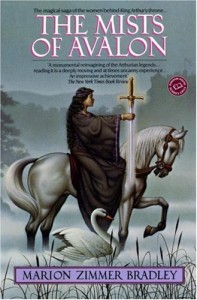
The Mists of Avalon, by Marion Zimmer Bradley
Summary
The novel series was first released in the United States by publisher Alfred A. Knopf in January 1983, for a targeted audience of adults, particularly women of any mature age. The Mists of Avalon tells the story of the rise and fall of King Arthur Pendragon in Britain during the late 5th and early 6th centuries, spanning across generations to narrate events from a little before his birth to sometime after his death. While it still encompasses many of the legend’s fantasy elements so well known today, the saga has a creative twist in that it relates the entire Arthurian legend from a completely different perspective: that of the female characters.
Review
As excited as any admirer of medieval fantasy fiction may be to start on a novel series with an Arthurian theme, the sheer length of this saga may prove daunting enough to warrant it a place on a summer reading list instead. This would likely turn out to be a wise decision, for one quickly discovers that Bradley’s elaborate plot, complex characters, detailed descriptions of medieval Britain, and fantastically original perspective of the Arthurian legend are capable of making the novels nearly impossible to put down for periods longer than are enough for basic necessary tasks, such as eating and sleeping. It’s arguable that enraptured readers would probably reach the end of the book well before the aforementioned list’s respective summer is over, and somehow feeling more conscious of – and respectful toward – the many possible interpretations of the story of King Arthur.
One of the most obvious themes that sets this novel apart from other Arthurian adaptations is feminism. The most widely known versions of these myths portray King Arthur and the Knights of the Round Table as the heroes of the story, while the women remain further toward the background as supporting characters with only a few key roles. In The Mists of Avalon, it’s almost exactly the opposite; Arthur and the other male characters sink into supporting roles, while the women rise up to become the protagonists in this original retelling. Readers are brought into the same world they know so well from the classic tales of King Arthur, yet at the same time, it becomes an entirely different world altogether, proving that vantage point really does make all the difference in the telling of a story.
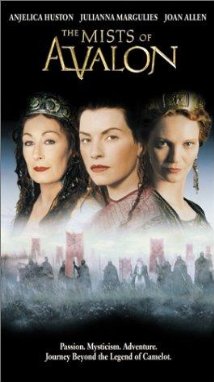
The Mists of Avalon (2001 TV Movie)
The majority of the narrative is told from the perspective of Arthur’s half-sister: the Avalon priestess Morgaine (known as Morgan le Fay in other Arthurian tales). Many chapters are also narrated from the viewpoints of other important women, among them Arthur’s wife, Queen Gwenhwyfar (the Welsh spelling of ‘Guinevere’); Avalon High Priestess and Lady of the Lake, Viviane; and Arthur and Morgaine’s mother, Igraine. Not only are these characters graced with much longer periods in the center of the narration, but Bradley also does a wonderful job of pulling these women out of their original unidimensional roles and giving them true depth, making them worthy of protagonism. Morgaine is no longer just an evil witch or a simple healer, but a strong druid priestess with good intentions and a tragic destiny. In turn, Gwenhwyfar’s innocent Christian veil is not just a plain matter of faith, but a slow descent into fanaticism brought on by an inferiority complex, her inability to bear children, and her search for salvation from her not-so-innocent infatuation with her husband’s best knight.
Which leads into the next main theme of the book: religion. One of the basic historical aspects of the Arthurian legend is the Christianization of Anglo-Saxon England, at a time when paganism was equally common. Again, a new light is shed on the story, as the conquering over dark pagan ways by Christianity becomes more of a struggle of rising tension and intolerance of the increasingly unstable balance between religions. The matriarchal society of Avalon is cast onto the defensive side against the overbearing patriarchal Church, eventually leading into a sequence of events in which Morgaine and the pagans strive to save Avalon and their native religion from disappearing from their country’s history altogether. Obviously, such strong religious implications – as is true of many novels with similar themes, notably Dan Brown’s The Da Vinci Code and Philip Pullman’s His Dark Materials trilogy – tend to spark equally strong criticism from religious groups, likely qualifying this book for a more “tolerant” audience.
Many might argue that it takes a certain kind of reader to enjoy a story like this, which boasts a generous share of heavy mature themes, such as sexuality and political radicalism. In light of such arguments, it may be best to recommend the series to readers deemed mature enough to refrain from dwelling excessively on these superficial themes (key as they are in many parts of the narrative) and truly appreciate the central concept Ms. Bradley intended to portray in her books: a story isn’t necessarily a simple matter of black and white or good and evil, but instead may hold several truths.
Inspiration
I first read this series when I was 14, after my mother gave me the single four-part volume as a Christmas gift. Since immersing myself in the world of Avalon, this saga has inspired me for its unique take on the legend of King Arthur, a story that has always fascinated me for its fantasy themes and insights into Celtic mythology. It was interesting to read this classic tale from the perspective of the women, and I quickly became entranced by the core theme of feminism present throughout The Mists of Avalon. Looking back, I’m glad my mom considered me mature enough to read the novels during my adolescence, for they introduced me to major political and religious topics during a key stage in my development as an independent thinker, and have thus become a great inspiration for the subtexts and themes that I like to write into some of my own stories.
The Mists of Avalon is, in my opinion, a classic work of art. Whether you’re an Arthurian enthusiast, a feminist, an intellectual with a fascination for religious debate, or simply a fan of well-written fantasy fiction, you will most likely enjoy this book. And if you happen to fit into every one of the above categories – as this writer likes to think she does – you will certainly devour it in no time, and still be left hungry for more.
by Naomi L. | August 7, 2013 | Blog, Creative Writing, Off The Bookshelf |
OK, it’s time to share another inspiring selection from my bookshelf. Because last week’s Notable Authors post was dedicated to J.K. Rowling, today’s Off The Bookshelf topic is a complementary review of her most famous works. Since I couldn’t say that only one of these books has inspired me, instead I’d like to briefly cover some general points of all seven of the author’s world-famous fantasy novels: the Harry Potter series.
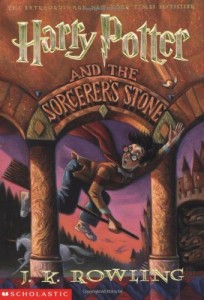

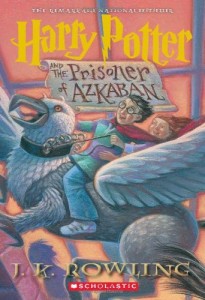
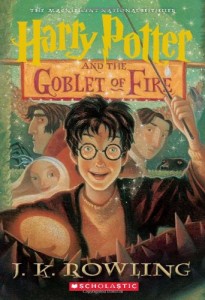

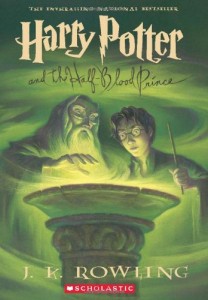
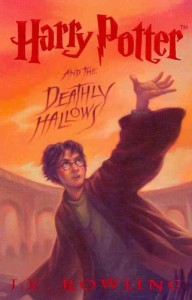
Summary
First published in the United Kingdom by Bloomsbury (June 1997) and in the United States by Scholastic (September 1998), the Harry Potter series consists of seven novels primarily in the fantasy genre, written for a target audience of young readers from children to young adults. The books tell the coming-of-age story of Harry Potter, a wizard boy who gained fame in the underground wizarding world as a baby after mysteriously surviving an encounter with the Dark sorcerer who terrorized the magical community and killed his parents. The series focuses mainly on Harry’s adventures with his friends Ron Weasley and Hermione Granger at Hogwarts School of Witchcraft and Wizardry between the ages of 11 and 17, with each book taking place over one year of the characters’ lives, all strung together through a story arc about the young protagonist’s quest to unravel the mysteries of his life and ultimately destroy the power-hungry Lord Voldemort to save the magical and nonmagical worlds from his evil reign once and for all.
Review
The Harry Potter books have gained incredible success since the first publication of Harry Potter and the Sorcerer’s Stone (if you’ll forgive my use of the American title, since it’s the one with which I’m most familiar), and with such high popularity and critical acclaim, it’s easy to see why. Rowling’s intricate world, compelling characters and engaging storyline quickly drew in millions of readers worldwide, and boosted the novels to become the best-selling book series in history by mid-2011.
Although it’s mostly considered fantasy for its predominant theme of magic, Harry Potter also falls under such genres as mystery, thriller and coming of age. This makes it a very versatile and unique read, which may partly explain its enormous success. Despite appearing as a children’s story about wizards on the surface, the series has many levels to it that make it appealing to a broader range of readers. For instance, those who don’t care so much for fantasy might still enjoy Harry Potter as an adventure story at its core, or for its mystery elements, or even as a tale about a young boy trying to find out who he really is. Aside from its overlapping genres, the author also made a point of allowing various themes to blossom throughout her work, including the trials of adolescence, political subtexts, and especially death.
One of the most notable achievements of this series was the fact that it encouraged so many children to read. Yet there was more to it than just getting kids to pick up books they would normally consider above their reading level. As one of the children of the Potter generation, I can attest to the special experience of growing up with the main characters. I read the first book when I was very close to 11 years old and finished the last one not long after turning 17, and because of the way the series gradually progressed into darker themes with each new book, Harry Potter was the key work of literature in my transition from lighter children’s stories to more mature fiction, helping me to develop both as a reader and as a writer.
There’s no question that these books will forever be revered throughout the history of literature, not only for their record-breaking commercial success, but for their tremendous cultural impact. The series has inspired an entire generation of young readers, and it will always hold a special place in the hearts of the millions who have been touched by the magic of Harry Potter.
Inspiration
If Roald Dahl first hooked me on fantasy stories with Charlie and the Chocolate Factory, J.K. Rowling kept me forever loyal to the genre with Harry Potter. As I like to put it, “I came for the chocolate factory, and stayed for the wizarding school.”
Harry Potter has been a huge inspiration to me since my childhood, as much in fantasy specifically as in the rest of my writing in general. The books have opened my eyes to a wonderful world of fiction, and they’ve taught me a great deal about the techniques and passion it takes to create a magical universe. I’ve been an aspiring fantasy author since I fell in love with creative writing as a child, and I can honestly say that this series has played a major part in keeping my dream alive for so many years. No matter how many other novels I go on to read and even write throughout my life, the Harry Potter books are and always will be among my absolute favorites.
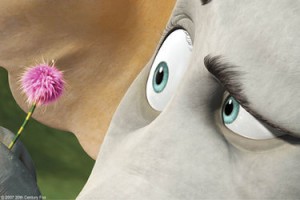



















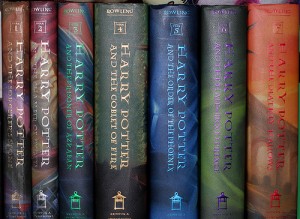

Recent Comments